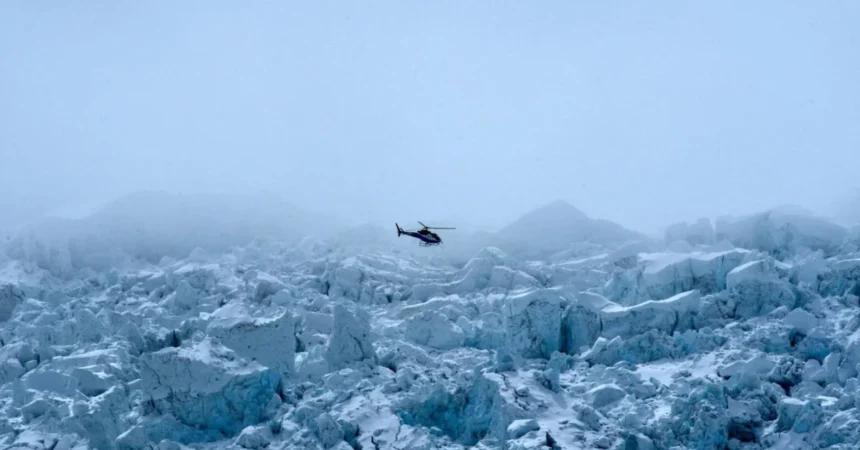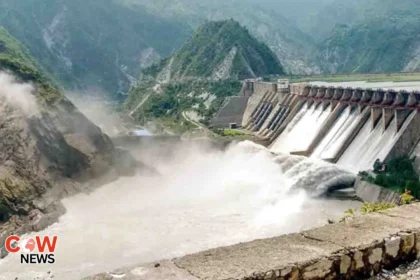Introduction
The majestic peak of Mount Everest, often referred to as the “Roof of the World,” continues to be a site of fascination and intrigue, drawing adventurers from around the globe. Recently, a remarkable discovery has captured the attention of historians and mountaineers alike: the remains of a climber believed to have perished on Everest over a century ago have been found. This discovery not only raises questions about the history of climbing on the world’s highest mountain but also serves as a poignant reminder of the risks taken by those who dare to conquer its heights.
This article delves into the details surrounding the discovery, the historical context of climbing on Everest, the implications for the families of those who went missing, and the broader significance of such findings in the context of mountaineering and exploration.
The Discovery of the Remains
In early October 2024, a team of climbers and researchers reported the discovery of human remains on Mount Everest, believed to belong to a climber from the 1920s. The remains were found at a high altitude, in an area known for its challenging weather conditions and treacherous terrain. Initial examinations suggest that the remains may belong to George Mallory, a British climber who famously disappeared during an expedition to the summit in 1924.
Mallory and his climbing partner, Andrew Irvine, set out on their historic ascent of Everest with the ambition of becoming the first individuals to reach the summit. However, they were never seen again, leading to decades of speculation about their fate. The discovery of these remains has reignited interest in their story and the mysteries surrounding their final expedition.
Historical Context: Climbing on Everest in the 1920s
To fully appreciate the significance of this discovery, it is essential to understand the historical context of climbing on Everest during the 1920s. At the time, the mountain was largely unexplored, and the challenges of high-altitude climbing were not well understood. The technology and equipment available to climbers were rudimentary compared to what modern mountaineers use today.
George Mallory and Andrew Irvine embarked on their expedition during a time when climbing Everest was viewed as one of the ultimate challenges. They had a deep passion for adventure and were motivated by the allure of being the first to conquer the world’s tallest peak. Their journey was fraught with danger, and they faced numerous obstacles, including unpredictable weather, high altitudes, and the physical demands of the climb.
The mystery surrounding Mallory and Irvine’s disappearance has intrigued climbers and historians alike for nearly a century. Many have speculated about whether they reached the summit before they perished, and the discovery of remains may finally provide answers to this enduring question.
The Implications of the Discovery
1. Renewed Interest in Mallory and Irvine’s Expedition
The discovery of the remains is likely to reignite interest in Mallory and Irvine’s expedition and the history of early Everest climbs. Researchers and historians may seek to learn more about their final moments and the challenges they faced during their ascent.
The renewed focus on their story may also inspire future generations of climbers to delve deeper into the history of mountaineering, shedding light on the sacrifices made by those who came before them.
2. Closure for Families and Descendants
For the families and descendants of climbers who have gone missing on Everest, the discovery of remains can bring a sense of closure. Many families have long awaited news about their loved ones, and this finding may help them come to terms with the loss.
As the remains are studied and identified, there may be opportunities for family members to pay their respects and connect with the history of their loved ones. This connection can be both healing and meaningful, as it acknowledges the bravery and spirit of adventure that characterized early mountaineering.
3. The Ethical Considerations of Recovery
The discovery of climbers’ remains on Everest also raises ethical questions regarding the recovery and treatment of human remains in high-altitude environments. Mountaineers who perish on the mountain often become part of the landscape, and the harsh conditions make recovery efforts challenging and dangerous.
There is an ongoing debate among climbers, historians, and ethicists about the best course of action when human remains are discovered. Some argue for the respectful recovery and burial of remains, while others believe that leaving them undisturbed honors the climbers’ legacy and respects the mountain’s nature as a site of adventure and tragedy.
The Broader Significance of Discoveries on Everest
The discovery of climbers’ remains on Everest is not merely a historical curiosity; it has broader implications for our understanding of exploration, adventure, and the human spirit.
1. Mountaineering as a Reflection of Human Ambition
Climbing Everest represents the pinnacle of human ambition and the desire to conquer nature’s most formidable challenges. The stories of climbers like Mallory and Irvine embody the spirit of adventure that has driven exploration for centuries. Their sacrifices and determination serve as a reminder of the limits of human endurance and the risks that accompany the pursuit of greatness.
The discovery of their remains can prompt discussions about the motivations behind mountaineering and the impact of adventure on individual lives and society. It challenges us to reflect on the nature of ambition and the costs associated with pursuing our dreams.
2. The Evolution of Climbing Technology and Safety
As the climbing community reflects on the past, it is also essential to acknowledge the advancements in technology and safety that have emerged since the 1920s. Modern climbers benefit from advanced gear, improved weather forecasting, and enhanced training techniques, all of which contribute to safer climbing experiences.
The discovery of historical remains can serve as a catalyst for discussions about safety in mountaineering. It can prompt climbers to consider the lessons learned from past expeditions and how they can apply those lessons to current practices, potentially saving lives and preventing tragedies.
3. Preserving the History of Mountaineering
The history of mountaineering is rich with stories of exploration, bravery, and tragedy. The discovery of climbers’ remains helps preserve this history, reminding us of the individuals who ventured into the unknown and the challenges they faced.
Efforts to study and document such discoveries are crucial for future generations. By maintaining a record of the sacrifices and achievements of climbers, we ensure that their stories continue to inspire and educate.
Reactions from the Climbing Community and Historians
The climbing community has responded to the discovery of the remains with a mix of excitement and reverence. Many climbers view this finding as a significant moment in the history of mountaineering, while others express caution regarding the implications of the discovery.
1. Respect for the Climbers’ Legacy
Climbers and historians emphasize the importance of treating the discovery with respect. Many are advocating for a careful approach to the remains, emphasizing the need to honor the climbers’ memory and the risks they took in pursuit of their passion.
2. Calls for Further Research
The discovery has also prompted calls for further research into the circumstances surrounding Mallory and Irvine’s expedition. Historians and climbers alike are eager to learn more about their journey and the challenges they faced. This renewed interest may lead to additional explorations of historical records and firsthand accounts from other climbers.
3. Ethical Considerations in Mountaineering
The ethics of mountaineering are a hot topic within the climbing community. The discovery of remains raises questions about how climbers should approach high-altitude environments and the treatment of those who have perished. Many climbers advocate for a balance between adventure and respect for the mountain, urging future climbers to consider their legacy and the impact of their actions.
The discovery of the remains of a climber believed to be from a 1920 expedition on Mount Everest is a poignant reminder of the risks taken by adventurers who seek to conquer the world’s highest peak. As the climbing community reflects on this discovery, it serves as an opportunity to honor the legacy of those who came before, learn from the past, and continue to explore the mountains with respect and responsibility.
This remarkable finding opens the door to renewed interest in the history of Everest climbing and prompts us to consider the broader implications of ambition, exploration, and human endurance. As we remember the climbers who have lost their lives on Everest, we also celebrate their spirit of adventure, which continues to inspire generations of climbers and explorers.
#EverestDiscovery #ClimbingHistory #GeorgeMallory #Mountaineering #HumanEndurance #EverestRemains #AdventureSpirit #ClimbingCommunity #HistoryOfExploration #MountainEthics







